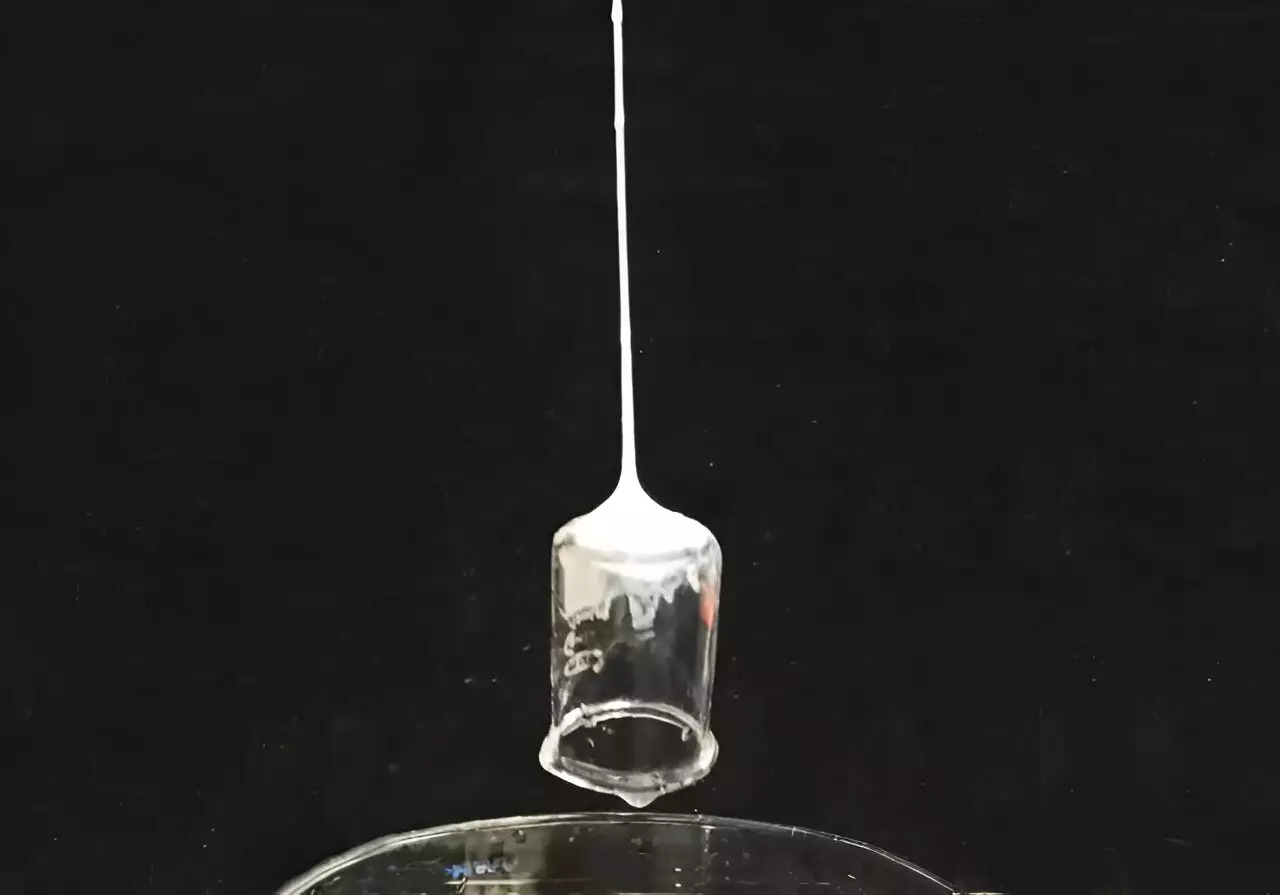For many children, the delight of fantasizing about superpowers, such as shooting webs like Spider-Man, plays a significant role in their formative years. Those vivid daydreams, once confined to comic books and cinematic adventures, might soon take on new dimensions thanks to groundbreaking research at Tufts University. This scholarship has paved the way for an innovative technology that mimics some of nature’s finest creations. Researchers have developed a web-slinging apparatus that not only shoots a fluid material through a needle but also allows it to solidify instantly into a fibrous string capable of adhering to and lifting objects with impressive strength.
The findings from this study are documented in the journal Advanced Functional Materials, highlighting a revolutionary stride in materials science that draws inspiration directly from natural silk fibers. The Tufts research team created these fibers from silk moth cocoons, which undergo a careful process of boiling and breaking down into proteins known as fibroin. By extruding the silk fibroin solution through specially designed narrow needles, the team can produce a stream of silk that solidifies upon exposure to air when mixed with targeted additives.
The idea of utilizing silk for tethers or webs finds its roots in a variety of arthropods, including spiders, ants, and bees, all of which produce silk during their life cycles for purposes ranging from building nests to surviving predators. The Tufts research team, known as the Silklab, has capitalized on this naturally occurring material to innovate in numerous applications, including powerful adhesives, printable sensors, and sustainable methods for microchip manufacturing.
However, the journey was not without its challenges; replicating the sophisticated control spiders have over their silk’s attributes, such as stiffness and adhesion, proved formidable. A serendipitous discovery by Marco Lo Presti, a research assistant professor, marked a shift in their approach. While cleaning with acetone, he stumbled upon a web-like substance forming, illuminating a path toward achieving the amazing iterations of spider silk.
The team encountered engineering hurdles that previously limited their progress—specifically, the slow formation of silk fibroin into a semi-solid state. By introducing dopamine into the equation, they expedited the solidification process dramatically. The combination of silk fibroin and dopamine reacts in a way that allows rapid fiber formation, thus mimicking the tenacity that spider silk demonstrates in nature. This chemical synergy is akin to the functionality found in barnacles, which also adhere strongly to surfaces, showcasing the beauty of nature-inspired solutions.
The method of spinning the resulting fibers into the open air involved considerable ingenuity. Upon shooting the silk solution through a coaxial needle surrounded by a layer of acetone, the silk immediately transitioned from liquid to solid, allowing the creation of threads that not only adhered but were remarkably durable. Remarkably, these fibers boasted an ability to support up to 200 times their weight, pushing the boundaries of what is mechanically feasible. Experiments showcased the capacity of the web-slinging technology to lift diverse objects, ranging from tiny cocoons to steel bolts.
Lo Presti drew attention to a key distinction between this newly developed technology and natural spider mechanisms. Notably, the ability of this apparatus to shoot webbing and grasp objects from a distance sets it apart from the traditional spinning methods of spiders. The researchers have aptly coined their innovation as a product of “superhero-inspired materials,” embedding a sense of wonder and creativity in their endeavor.
It is worth mentioning that this technology has not yet reached the tensile strength of natural spider silk, which surpasses man-made fibers by a staggering margin. However, the continuous iteration and imaginative vision driving this research could lead to groundbreaking enhancements over time. Fiorenzo Omenetto, the director of the Silklab, underscored the importance of navigating the realms between imagination and pragmatic engineering, admitting that these intersections are where breakthroughs flourish.
The implications of this innovative silk-slinging technology are promising for myriad applications. From potential uses in various fields—such as medicine, construction, or robotics—to environmentally sustainable practices, the marvel of what can be achieved through the fusion of inspiration from nature and cutting-edge engineering is limitless. As researchers continue to refine and expand upon this foundational work, it stands as a testament to the intricate dance between creativity and scientific inquiry. With each advancement, the gap between childhood imagination and real-world innovation narrows, ushering in a new era of possibilities.

